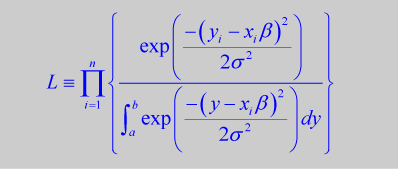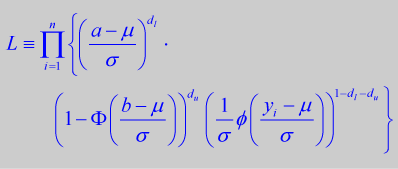-
What's All About?

This research only has one goal: try to fix boundary violations when the truncated regression model is applied. For instance, a party vote share is naturally confined within a range from 0% to 100%. If our model gives a predicted value below 0% or above 100%, this result is a boundary violation and under no circumstance can this happen in reality. Applying the technique of constrained optimization in nonlinear programming, I develop a revised truncated regressio model that solves the boundary violation problem.
Enter -
Table of Content

Much political science research involves analysis of a trunacted dependent variable. In econometric textbooks, these studies should apply the truncated regression model, otherwise the OLS estimate is likely to generate out-of-bounds predicted values. However, political scientists seldom use truncated regression and are unaware of this methodological problem. In this article, I propose a revised truncated regression model with constrained optimization and successfully eliminate boundary violations.
Enter -
What's Not About?

Some of my political science friends believe that this paper intends to insult political science or sounds condescending at least. They reject my effort by saying that this work is irrelevant to political science and that this research has no value at all. I am fine with all these comments, but I want to emphasize that my work is a serious academic study that aims to improve the current statistical method. I have no intention to be condescending, nor am I mocking or insulting political science at all. It is simply something that needs to be done.
Enter

